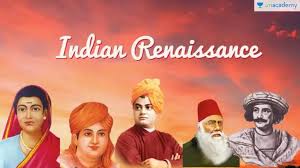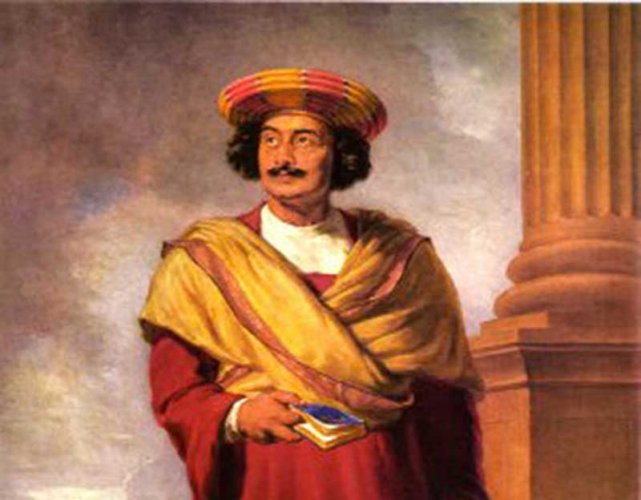Introduction
The emergence of the Indian Cultural Renaissance is mainly attributed to the liberal education that youths had in the 18th century. The colonial powers came and established their bases and taught the unifying language to the locals to enable them to get menial jobs in offices. Exposure to Western Culture changed the mindset of the impressionable minds of the educated youth in our country. They were able to objectively compare our country’s social set up with those of European countries to draw some lessons. A bunch of highly advanced and intellectual men from Western culture spread the ideal concepts through their education. This not only revived the learning but also enriched the local culture with its positive effects.

Indian Renaissance
The gradual, but a subtle beginning of Indian renaissance also had followed similar lines, after being thoroughly inspired by the European masters. In times of internal insurgency and struggle for Indian independence from the English, an educated class of people had fought seriously for the betterment of the society. In that process, they sealed some friendly ties with foreign nationals. Contrary to the expectation, the Indian renaissance did not only begin its journey during the British Raj. Instead, the highly celebrated Indian cultural revival had its origin in the pre-English era. Going down the Indian historical lane, one can find the signs of Indian renaissance during the Portuguese rule. The Portuguese were the first Europeans to set up trading posts in India. Other colonial powers, like the Dutch, the French, the Danish and lastly the British followed them in their quests to establish supremacy. Though the signs of cultural renaissance could be traced back to the Portuguese period, it did not have much impact as those colonial establishments were not more than tiny enclaves. Only by the mid-eighteenth century that the scenario changed after the British East India Company acquired the whole of Bengal after the Battle of Plassey in 1757.

Period of Chaos
The leaders like Raja Ram Mohan Roy and Ishwar Chandra Vidyasagar were mostly from the Bengal province. They lived in the first half of the nineteenth-century which was in cultural turmoil. Under the barrage of information from the Western countries through the medium of the English language, the glories of ancient India were beginning to fade away from the minds of youth in the country. So, the great works of Aryabhatta, Charaka and other people from the Vedic period were going into the oblivion. This was mainly because of the attitude of the people who learned them without giving a thought to their real meaning. Even the short-lived, free-handed vibrancy of Mughal Emperor Akbar’s sixteenth-century court was fading into oblivion. Since the collapse of the Mughal Empire, the whole country was lurking in chaos. Against this backdrop, Ram Mohan and Vidyasagar had set about reconstructing the civilization from its ashes, paving the way for its resurging revival.
Cultural Revolution
Over the next several decades, the East India Company adopted the policy of attacking and annexing various princely states in our country. This way the company came to directly or indirectly control most of the subcontinent. To remain in power, they started various departments that needed people for blue-collar jobs. Since these jobs need English-speaking people, they started imparting English education to the youths of our country. This way the British conquest of India did have a positive long-term impact on India’s ‘wounded civilization’. As part of the new curriculum introduced by the British authorities, the teachers taught modern subjects such as science and the ‘English language’ in schools. Most importantly, they created an environment in which sparkling minds unshackled the existing setup to imagine a new one. Some of the early reformers of our country got benefited from this educational set up. They included Raja Ram Mohan Roy, Ishwar Chandra Vidyasagar, etc. These people took upon themselves the mantle of making India a better place to live in. Hence, it can safely be stated that they left no stones unturned to usher a positive change in the social set up of the country.

Contributions of Raja Ram Mohan Roy
Since he was born into an aristocratic family that had financial resources, Raja Ram Mohan Roy had studied in foreign Universities where he had experienced the virtues of being free. Therefore, he became fluent in several languages, including Bengali, Arabic, Hindi, Sanskrit, and Persian. However, the mastery over these languages did not give him the knowledge to free society from the clutches of poverty, untouchability, etc. According to him, only the English language opened up the medium for the youth to reach new ideas coming from Western culture. Therefore, he fought for the introduction of the English language in Indian Schools. He also advocated for the teaching of modern subjects like Human Anatomy and Mathematics. After the introduction of English in schools, the true cultural renaissance commenced. The youths of the country began getting ideas from Western and Oriental cultures. The new common language played an intensely crucial role in opening the country to new and revolutionary ideas and helped it re-discover its past glory. The emergence of English as the common medium to some extent filled the void created by the decline of Sanskrit as a common language. Thus, youths from across the country could freely interact with one another in one common language and exchange their ideas. Thus, one can see that the introduction of English as a common language began uniting people across the regions on a common cause. Though the British officials had different intentions in introducing their language in schools, it had essentially brought the youths of the country under one roof. This is why leading Indian social reformers were strongly in favor of introducing the English language in Indian Schools.

Contributions of Ishwar Chandra Vidyasagar
Ishwar Chandra Vidyasagar was one of the first products of the new approach to learning. As a youngster, he came to Calcutta from a remote village to study at the newly opened Sanskrit College in 1829. Over the next few years, he learned the ancient Sanskrit texts. During the same period, young Vidyasagar had also studied English and Hindi languages. Having imbibed the spirit of the renaissance through learning, he went on to make major contributions in areas ranging from women’s rights and education to Indian language publishing. Using his mastery over the Bengali language, Vidyasagar even simplified its script to give the language its present form. He even established many schools for the benefit of girls. He was the first social reformer who fought for the rights of women and girls. He also was instrumental in establishing the Calcutta University, which many hail as the subcontinent’s first modern university. It was established in 1857. These were sumptuous information in Indian history that had further raised the advent of Indian renaissance to esteemed heights.
Contributions of Other Social Reformers
Other brave hearts also decided to follow the path treaded by Raja Ram Mohan Roy and Ishwar Chandra Vidyasagar. They included people like Dababhai Naoroji, Madhav Ranade, Gazalu Chetty, Sri Ramakrishna Paramahamsa, and Swami Vivekananda. As before, all these path-setters were the products of the new education system followed by the British government in pre-independent India. All these people lived in upcoming cities like Madras, Bombay, and Calcutta. In comparison, those coming from the old cities like Delhi, Lucknow, and Hyderabad were less in number. They took up the task of taking the societal changes to newer heights. These reformers further spoke about the need for the people to think independently and rationally. They claimed that only an independent mind could generate creative thoughts and think objectively.
Indian Renaissance in the 19th Century
Post eighteenth century and at the beginning of Indian cultural renaissance, the nineteenth-century reformers were all very conscious of the need for a wider reawakening of civilization. They sought to funnel the collective positive energy for the common cause of freedom. This is perhaps counted under the most important header, driving the history of India towards an international direction. Over the next century, the reformists’ idea of cultural modernization led to the Independence movement. It can also be noted that throughout this Indian renaissance period, the country’s intellectual leadership continued to emphasize the need for innovation and cultural openness to collect more ideas to reinvigorate the freedom movement. Slowly, the cultural renaissance led to a national movement for the independence of the nation. Following the cues from the earlier reformers, the 19th-century reformers sought to bring changes in the way the British officials were looking down on their Indian subjects.
Conclusion
Though the colonial governments sought to bring in suitable changes to enable them to employ Indians in their departments to rule the country, they brought in positive changes in the society. The introduction of the English language offered a common medium for the educated youths of the country to interact with one another and exchange knowledge. This helped them to find the common grounds for a cause. They discussed their outlook on the concept of freedom as expressed in foreign books. Many of the social reformers of the 18th and 19th century period were taught in foreign universities. Hence, they experienced first-hand the feeling of freedom. Therefore, they asked the British authorities to introduce English, Modern Mathematics, and Human Anatomy in the Indian educational system. The social reformers of the above said period later could channelize the positive energy of this change for a common good.

You must be logged in to post a comment.